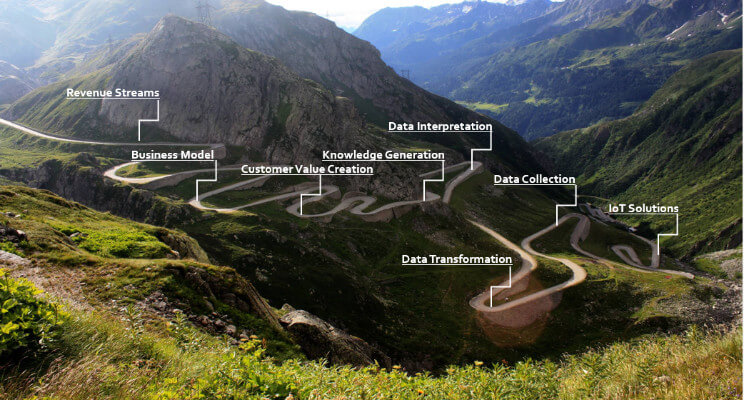It’s been well over 4 years that IoT solutions have been seeded to business strategies and now is the harvesting time. Gartner Consulting –in its famously presented hype cycle map- has shown that IoT will reach the maturity plateau in the next 5 years. But how much of the corporate world have thought of the business disruption that such an enabling technology might cause to the way that revenue streams are generated and what kind of impact would this ones have on the business success. Well, as it is expected this is not a simple answer but there is a pattern that shall be addressed to harvest the most benefits out of it.

Apart from the technical trend the corporations nowadays are considering Data as the new Gold (or Oil). The way to pump/ extract more of them is by using the IoT technologies as the main tool. Since data have immense value, one of the key stakeholders to build the new business models is inevitably the CFO. Unfortunately, the CFOs are focusing mainly at the core business and there is no time invested on the introduction of new Business models for the corporate systems and their effects on the cash flow streams.
IoT ventures shall be questioned and reviewed by the financial departments as an End-2-End value generating solution. How is the legacy business disrupted? What are the Cash Flow Implications? How will our financial statements look like after 1 or 2 years? Which ones are our new controlling mechanisms? Similar questions cannot, and should not, be answered by technical departments or expert groups.
Most of the unsuccessful IoT project are facing business issues rather than technical ones and mainly because the business is not accompanying the entire value chain of analogous projects. Every success IoT story has 3 main “players”:
- The Expert technical Group, which will develop the IoT Application
- The Finance department (CFO), which will verify the financial business model
- The IT, which will build the business model at the business Tools (e.g. SAP, Quickbooks etc).
Each IoT venture without considering the view of the 3 main stakeholders is driving innovation against the odds with many implications on the organization structure and its future business success.